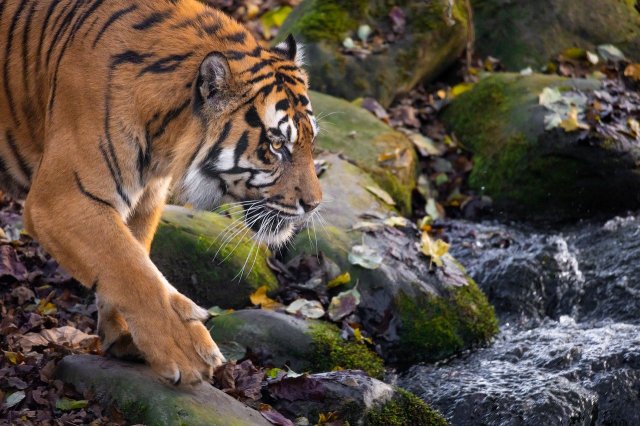Wild Tigers Roam: Countries Home to Majestic Wild Tigers
Unleashing the Majestic Power: Witness Wild Tigers Roam Free
Wild tigers roam, with their striking beauty and powerful presence, have captivated humans for centuries. These majestic creatures are not only a symbol of strength and grace but also play a crucial role in maintaining the delicate balance of ecosystems. Unfortunately, due to habitat loss, poaching, and illegal wildlife trade, the population of wild tigers has drastically declined over the years. However, there are still a few countries where these magnificent creatures roam freely. Let’s explore some of these countries and the efforts being made to protect and conserve wild tigers.
India: The Land of the Royal Bengal Tiger
Wild Tigers Roam: India, with its diverse landscapes and rich biodiversity, is home to the largest population of wild tigers in the world. The Royal Bengal Tiger, known for its regal appearance and powerful presence, is the national animal of India. The country’s tiger reserves, such as Ranthambore National Park and Bandhavgarh National Park, provide a safe haven for these endangered creatures.
India has implemented various conservation initiatives to protect its tiger population. The government has established Project Tiger, a wildlife conservation program, which focuses on the protection and management of tiger reserves. Through this program, efforts are made to combat poaching, improve habitat quality, and promote community participation in tiger conservation.
Thanks to these conservation efforts, India has witnessed a significant increase in its tiger population. According to the latest tiger census, the country’s tiger population has risen from 1,411 in 2006 to 2,967 in 2018. This remarkable success story serves as an inspiration for other countries striving to protect their own tiger populations.
Russia: The Land of the Siberian Tiger
Russia, with its vast and remote wilderness, is home to the Siberian tiger, also known as the Amur tiger. This subspecies of tiger is the largest and most endangered tiger species in the world. The Russian Far East, particularly the Primorsky and Khabarovsk regions, provides a critical habitat for these magnificent creatures.
Conservation efforts in Russia have focused on protecting the Siberian tiger’s habitat and combating poaching. The government has established protected areas, such as the Sikhote-Alin Nature Reserve and the Land of the Leopard National Park, to safeguard the tiger’s habitat and promote its recovery.
Furthermore, international collaborations have played a crucial role in the conservation of Siberian tigers. The Global Tiger Initiative, a partnership between governments, international organizations, and conservationists, has supported conservation efforts in Russia by providing funding, technical expertise, and capacity building.
Nepal: A Conservation Success Story
Nepal, a small landlocked country nestled in the Himalayas, has emerged as a conservation success story in recent years. Despite its challenging terrain and limited resources, Nepal has made remarkable progress in protecting its tiger population.
The country’s commitment to tiger conservation is evident through its “Tiger Conservation Action Plan.” This plan focuses on strengthening anti-poaching efforts, improving habitat management, and promoting community-based conservation initiatives. Nepal has also established several protected areas, including Bardia National Park and Chitwan National Park, which serve as important tiger habitats.
As a result of these conservation efforts, Nepal has experienced a significant increase in its tiger population. The latest tiger census revealed that the country’s tiger population has doubled since 2009, reaching an estimated 235 individuals.
Conclusion
Wild Tigers Roam: Wild tigers are not just charismatic creatures; they are also indicators of a healthy ecosystem. The countries mentioned above, along with many others, are working tirelessly to protect and conserve these majestic animals. Through initiatives like habitat preservation, anti-poaching measures, and community involvement, these countries have managed to reverse the decline in tiger populations.
However, the battle is far from over. Illegal wildlife trade and habitat loss continue to pose significant threats to wild tigers. It is crucial for governments, conservation organizations, and individuals to join forces and support tiger conservation efforts.
By protecting wild tigers, we not only ensure the survival of a magnificent species but also safeguard the biodiversity and ecological balance of our planet. Let us continue to work towards a future where wild tigers can roam freely and thrive in their natural habitats.
Escape to Nature’s Haven: Turpentine Creek Wildlife Refuge in Eureka Springs, AR





